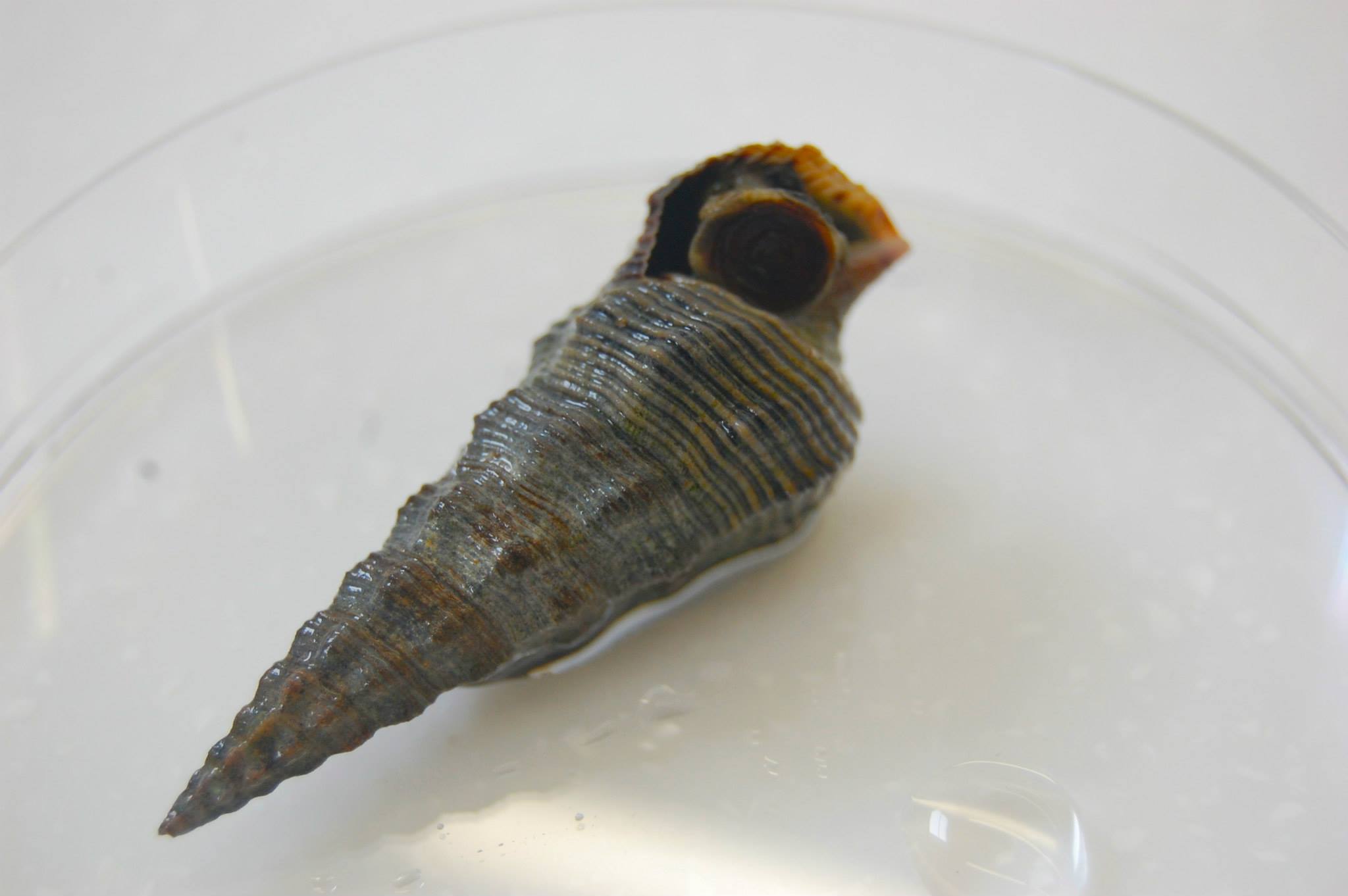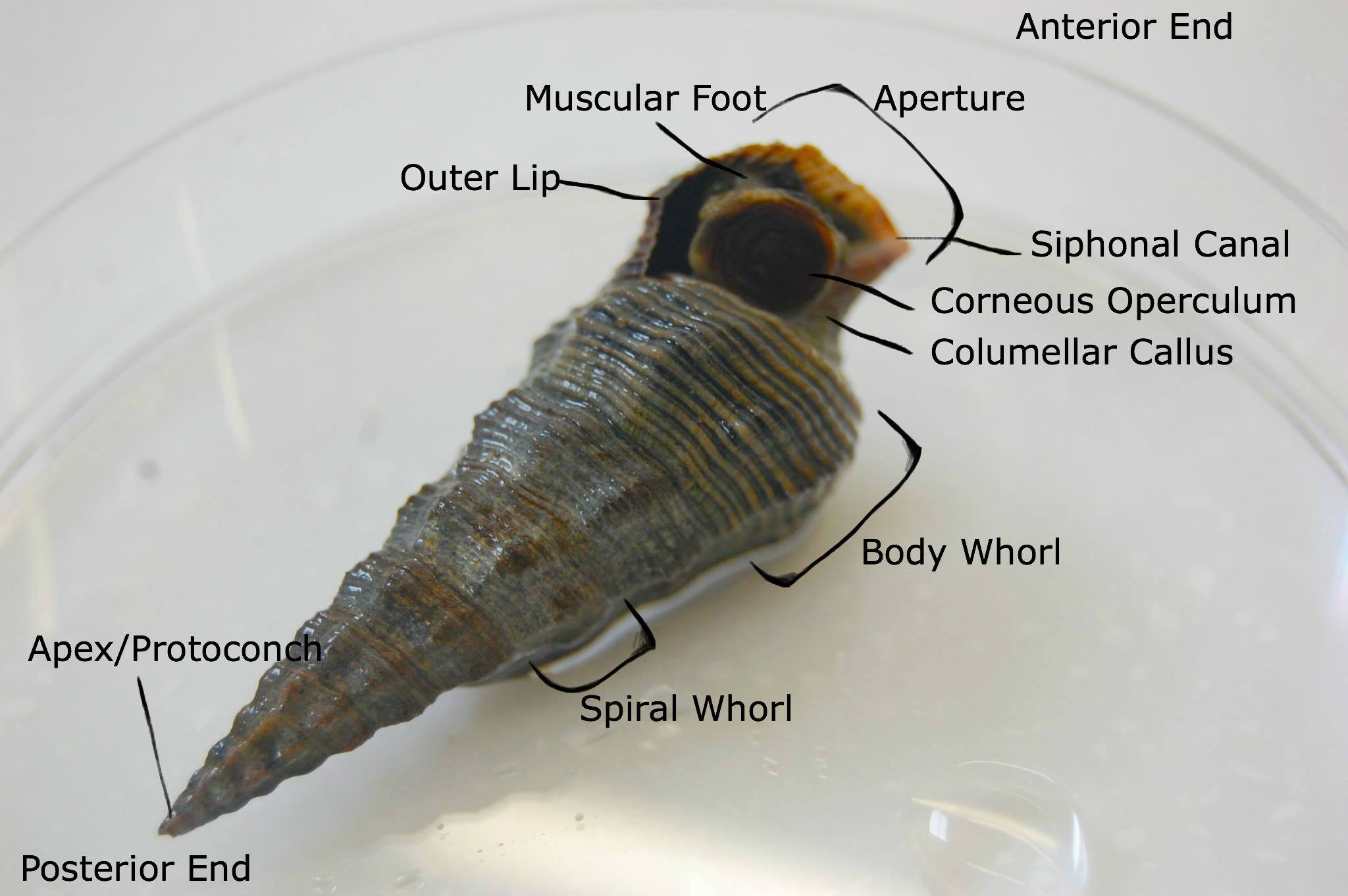Physical Description
The Pyrazus ebeninus is a large marine snail with a solid and heavy shell found in tidal estuaries. The teleoconch of the P. ebeninus is a long spire that is narrow and toelongately conical, similar to a club shape (Fig. 1, Strong et al. 2011). Contraction of the teleoconch shell occurs on the upper last two whorls that leads to a row of pointed nodules at centre shown by the apex in the protoconch (Fig. 2, Beechey 2005). The spiral structure of the shell exhibited by the spiral relief patterns of approximately 10 ribs overlaying the axial sculpture with the columella running from the apex to the tip of the siphonal canal (Fig. 2) The whorls are identified by 360 degree spirals along the shell structure with the body whorl being the basal, largest whorl including the aperture (Fig. 2). The aperture is seen as the large opening of the shell allowing extension and retraction of the muscular foot that is sealed with the operculum. The shells's circular corneous operculum is used to seal in moisture and to avoid predation around the aperture, consistent with operculums' of other gastropods (Williams & Ozawa 2006). The outer lip of the aperture flared is at the bottom to exemplify a deep siphonal canal (Fig. 2; Beechey 2005, Edwards 2009). The posterior medial sinus of the shell is shallow with the columellar callus is expanded over the columellar area (Fig. 2; Strong et al. 2011). The exterior of the shell color ranges from light to dark brown allows some crypsis to blend in with their muddy surroundings and the deep interior of the aperture is ranges from purple to black (Fig. 1; Fig. 2). The columella and outer lip are typically white colored, but are sometimes edged with black or brown (Beechey 2005).
 
Figure 1: The axial 360 degree spiral whorls shown along the spiral structure on the teleoconch from the anterior end.
 
Figure 2: Labeled diagram of the external anatomy of P. ebeninus exhibiting the spiral whorl structure of the shell with the body whorl being the first spiral whorl at the anterior end. The anatomy of the flared aperture is also seen at the anterior end with the operculum indicated as the corneous circle on top of the foot and above the siphonal canal with the columella located centrally along the apex down to base of the siphonal canal. |